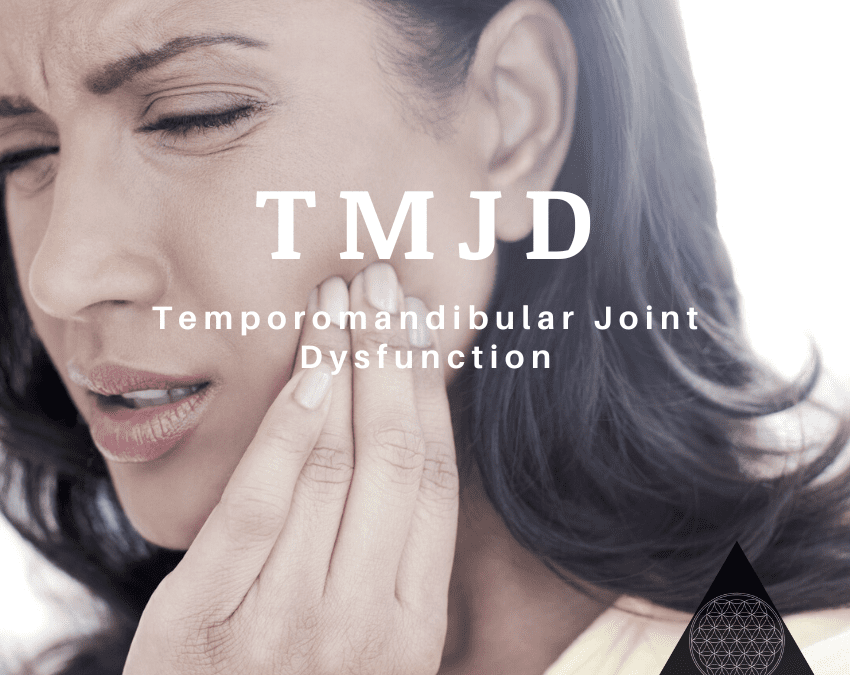TMJD or Temporomandibular Joint Dysfunction can be effectively treated with physiotherapy, massage therapy or chiropractic. TMJD may be experienced as tension in the jaw, pain in the jaw, clicking on opening or closing the jaw, inner ear pain, headaches, tinnitus or tooth pain. Sometimes the TMJ is the main driver of SI joint dysfunction, and you only feel symptoms in the lower back.
TMJD Treatment
TMJD is effectively treated with manual therapy. After a thorough assessment of how your jaw moves when you open and close your mouth, your practitioner can determine which muscles need to be released to restore proper biomechanics and relieve pain. TMJD treatment can be done outside the mouth, but is usually more effective if you’re comfortable with work inside the mouth, with gloves on of course.
What Causes TMJ Dysfunction?
The TMJ, is the jaw joint and all of the associated connective tissues that attach to it. You can find it by poking around directly in front of your ears, below your temple. Your TMJ is used for a lot of very important things like chewing, talking, yawning and drinking. It is considered dysfunctional when it is either painful, subluxes, causes inner ear pain, causes headaches, causes dental pain, or is linked to other dysfunctions in your body.
For example, when the jaw doesn’t track evenly straight up and down like it should, it can change your perception of where your center is. This can cause dysfunction in other areas, most commonly the lower back, hips, shoulders and neck.
In most cases the pain is caused by muscle imbalance between the medial and lateral pterygoids, masseter, temporalis and supra-hyoid, infra-hyoid muscles. The most common pattern we find is the masseter on one side and the lateral pterygoid on the opposite side are working too hard or you rely on them too much for things like chewing. Maybe you habitually chew on one side. This causes the jaw to track unevenly, so your jaw moves to one side a bit when you open and close. There can also be issues with the disk that sits in the joint. It can become hypermobile and this is where you will typically experience clicking. The clicking may or may not be painful. In some cases it can lead to osteoarthritis of the TMJ later in life, so it’s worth getting it assessed. An ounce of prevention is worth a pound of cure they say.
We also see a lot of bruxers or grinders. This can be in conjunction with uneven tracking and/or clicking. Clenching and grinding can happen at night while you sleep and/or during the day. If this is you, your dentist may have recommended a night guard, which is helpful for protecting your teeth from wear and tear or stress fractures. Unfortunately, night guards don’t do anything to address the underlying mechanical problem.
Clenching and grinding the jaw is also typically linked to stress and anxiety, neck or back pain, but not always. It could be something you’ve done since you were a kid, or it was triggered by a life event or high stress time period. Other things linked to TMJD include dental procedures especially invasive ones, facial or head injuries like taking a punch or concussion. Its a common symptom in people with whiplash.
The pain of TMJ dysfunction can be sharp, searing and catching, or dull and constant. It can be mild or extremely debilitating. Symptoms you may experience include:
- Inner ear pain, fullness/pressure in the ears, ringing in the earsTension headaches, especially at the temples and base of the skull
- Facial pain, Neck pain
- Sore, tight, tender jaw muscles
- Temple, cheek, tooth or jaw pain while swallowing, yawning, talking or chewing
- Jaw popping, clicking or locking upon opening or closing, or while chewing
- Reduced ability to fully open or close the mouth
- Muscle pain and spasms in the face, head and neck
Fortunately, a well trained Physiotherapist, RMT or Chiropractor can help you with your TMJD. You can expect an in depth assessment which will give us some indications of what the underlying cause is. Manual therapy will be applied, which may include soft tissue release/massage to the affected muscles around the jaw, some gentle joint mobilizations and corrective exercises. Relaxation techniques may also be incorporated and treatment to other areas may also be indicated. We are big on patient education and empowering our patients by teaching at home techniques and exercises that you can use yourself. TMJD is not typically a one off treatment and will likely require repeated treatment, which you can help with by doing your prescribed homework. Typically patients do start to see some immediate improvement when the right treatment approach is applied to TMJD.

